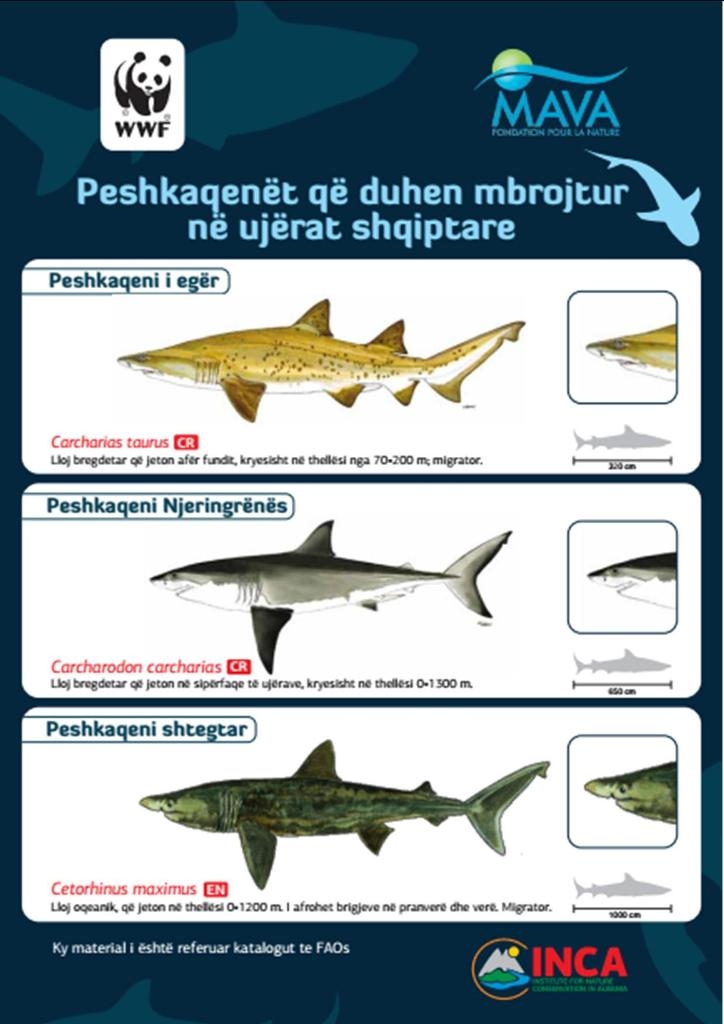
Parent Category: INCA
Hits: 4736
Sharks and Rajas in The Mediterranean Sea
The Mediterranean Sea in one of the hotspots of biodiversity for sharks , rajas and chimeras in the world, with around 86 species living in its water (47 sharks, 38 rajas and 1 chimera), meaning naerly 7% of cartilaginous fish in the world. Sadly , The Mediterranean Sea is considered one of the most dangerous places in the wolrd for sharks and and rajas , with nearly 50% of its species under threat.Of the 73 species included in the assessment , 20 species are classified asa Critically Endangered (CR) , 11 as Endangered (EN), 8 as Vulnerable (VU) , 9 as near Threatened (NT) and 12 as minor ConcernsThirteen species are still categorized as having data deficiencies (DD) that reveal a lack of information and uncertainty in species status that may be worse than expected with current data.
About 14,065 tones of sharks and rayas were catched in the Mediterranean in 2015. The largest catches are reported from Libya (4,260 t), Tunisia (4,161 t), Italy (1,347 t), Egypt (1,141 t), Spain (918 t) and Greece (800 t)
Italy is one of the world’s largest consumer markets for shark meat and ranks as the world’s third largest importer by the volume. This shark meat in mainly supplied through the major European producers , being Spain the main supplier with an annual average of 49% by volume of total shark meat imports.
Casual fishing
There are some threats affcting sharks and rajas in the Mediterranean Sea , but overfishing seems top be the most important , although there is no typical shark fishing on th region.Sharks and rajas are accidentally aught in much of the Mediteranean fishery .
However, there is a significant knowledge gap as the level of casual catches and jumps is not properly reported. Bottom nets and long hooks are the most important fishing for the occasional catch of sharks. Long hook fishing that mainly affects sharks and pelagic rajas (long pelagic hooks), but also benthic species (bottom nets). Occasional catches of sharks and rajas represent about 10-15% of the catch biomass analyzed in tuna and sea fisheries. The Alboran Sea is the most important area with 34.3% followed by the Adriatic Sea with 15.1% (Megalofonou et al., 2005b).
To improve knowledge of endangered species of sharks and reefs, INCA in collaboration with FAO and the Ministry of Agriculture and Rural Development (Directorate of Fisheries), has compiled a catalog of species that are most frequently seen and captured in Albanian coast. This catalog will help fishermen to better identify species that are protected by IUCN. Correct assessment of the species will help to capture them at the time of capture as well as fisheries statistics to assist endangered species in Albanian marine waters to enrich more information on the presence of different shark species. and regions by promoting and analyzing the conditions and the frequency of their presence in these waters.
This catalog is designed as part of the SafeSHARKS project funded by the MAVA Foundation and implemented by INCA in partnership with WWF Italy.



